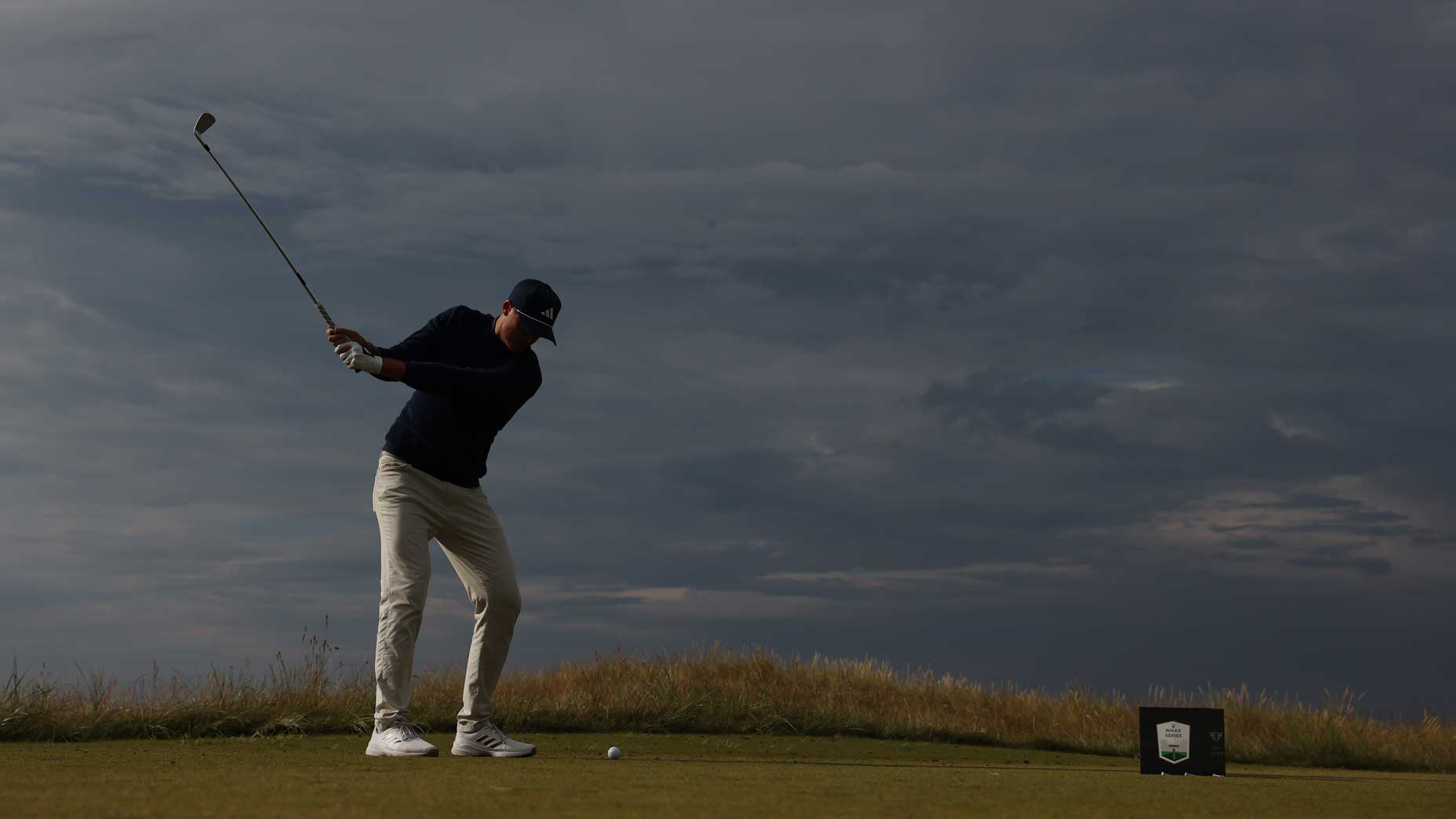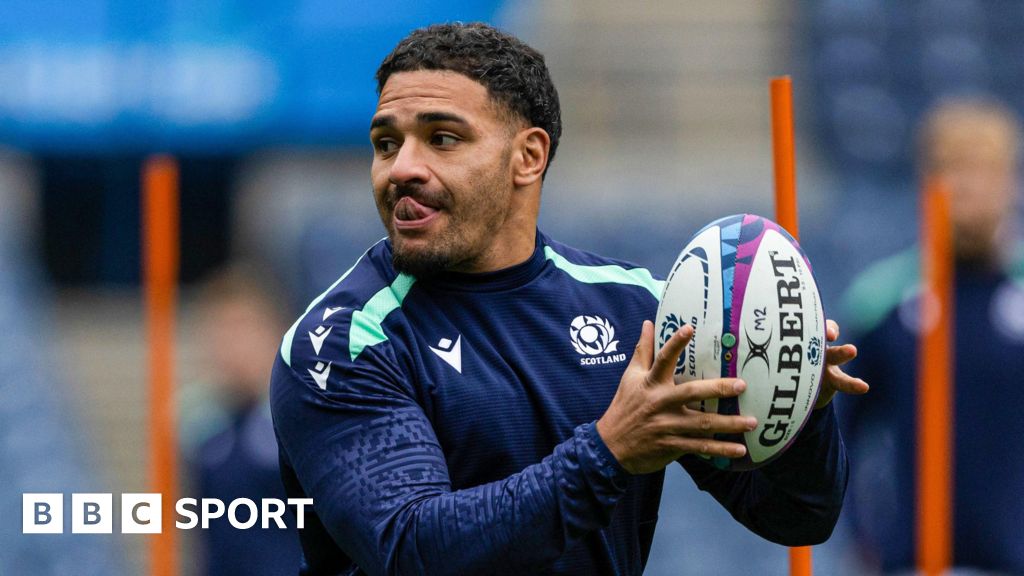Golf
A struggling golfer watched Ludvig Aberg — then shot the course record

Richard Mansell witnessed Ludvig Aberg’s deliberate approach to his shots … then recorded the course record.
Getty Images
Of the 158 players in this week’s Open Championship field at Royal Troon, Richard Mansell might be the most surprised to be here.
That’s because, heading into the final round at last week’s Genesis Scottish Open, he felt lost. But the way in which he went from lost to suddenly found includes a simple reminder about professional golfers — and a tip that I suspect nearly every golfer could benefit from.
Back to Mansell, though, last Saturday. “I’ve been struggling with my game recently. Just constantly feeling like I’ve been searching,” he said. After his third round, an even-par 70 that took him out of contention, he phoned up his manager for a vent session that lasted several hours.
“I was just kind of moaning a little bit, as golfers do, about where my game is at and stuff like that,” he’d say the next day. Near the end of the call Mansell voiced a specific frustration. “I can’t — the way I’m playing, I can’t shoot a low round at the moment.”
“[My manager] was like, ‘Well, it’s got 65 all over it.’
“I said, how about 61?”
It was all good fun at the time, a conversation that began by blowing off some steam and ended with some why-the-hell-not optimism for the final round. Mansell was 13 shots behind 54-hole leader Ludvig Aberg, after all, and near the bottom of the leaderboard. What was there to lose?
The Course Record
Mansell began the next day with two thoughts in his head.
The first had come from his caddie Brian, who was filling in for the week and noticed something about his mindset.
“He just kind of told me that I’m too hard on myself,” Mansell said. “I hit some good shots that — we as golfers, we chase perfection and then I’m moaning a bit because it’s 25 feet instead of 15 feet and then you just don’t give yourself a chance to go and make the putts.”
Be nice to yourself. Relatable.
The second came from a chance Saturday encounter on the range with Aberg.
“Believe it or not, I was on the range [Saturday] and I was watching Ludvig hit balls and I saw how quickly he gets on with it,” Mansell said. Aberg is known for the decisiveness with which he goes from addressing the ball to beginning his swing; once he makes a plan it’s not long before he’s executing on that plan.
“I was like, I do not do that,” Mansell continued. “I kind of need to take a leaf out of that book and I tried to quicken up my routine and see the target and go.”
Be nice to yourself. See the target and go.
That worked. It really worked. Mansell started Sunday’s round one over through two holes but played nearly flawless golf the rest of the way. When he holed his birdie putt at No. 18 he’d finished off a round of nine-under 61, tying the Renaissance Club’s course record. All facets of his game had clicked at the right time but especially his putting, where a freed-up stroke gained him more than four shots on the rest of the field.
“It’s just made me realize even more that this game is just insane, and like you say, you’re never as far away as you think you are,” he said post-round. “And I’m hoping that that can kind of kick-start my season now.”
Better yet, the result catapulted Mansell into the Scottish Open’s top 10, a high enough result to earn the final qualifying spot for this week’s Open Championship. He’s into the fifth major of his career. Not a bad Sunday.
So how to explain the turnaround?
On the one hand it’s easy to dismiss Mansell’s round as a one-off outlier. These guys are all supremely talented, after all. They’ll run into a low one eventually.
On the other hand, what if it was that swing thought he picked up via driving-range Aberg osmosis? It’s possible his observation unlocked one of golf’s simplest secrets: We all stand over the ball for too long.
The eight-second theory
It’s an old idea but one that keeps coming up. In 2016, GOLF Top 100 Teacher Mike Bender co-wrote a book with accomplished amateur Michael Mercier pitching the idea that the process of hitting a golf ball, from start to finish — taking your stance to finishing your swing — should take eight seconds. They’d watched the game’s greats, they said, and this was their finding. Eight seconds was optimal, with some wiggle room up to 10 or 12. Consistency was optimal, too. Longer routines, particularly those that varied and got longer under pressure? Those led to suboptimal results.
Mike and Michael found something interesting: Of two dozen or so Hall of Famers they studied only one — Jack Nicklaus — broke that eight-second rule. But even he had an abbreviated pre-shot routine which meant his complete process (pre-shot routine plus over the ball) was still under 20 seconds, similar to what they’d observed with other greats.
The best kept their routine the same under the brightest lights.
“Almost always under pressure there is a tendency to take more time,” sport psychologist Bob Rotella told Golf Digest at the time about the eight-second theory. “But the real problem is when you start taking too much time between the last look at the target and the swing. I try to get guys going with their first instinct. That one is all about confidence and commitment. The second one can be filled with fear and doubt.”
Aberg said earlier this year that it comes to him naturally. “Once I make a decision, I try to go with it.”
Ironically Sunday wasn’t Aberg’s day; as it turned out, the man copying his approach, Mansell, shot a score a dozen shots better than his 73. The Swede’s Sunday served as a reminder that closing out golf tournaments is tough for everyone, star 24-year-olds included. And [gestures] all of the above are reminders of golf’s fine margins and fickle nature.
Let’s hear more testimony. Listen to Rory McIlroy, who told The Guardian earlier this week about one thing he did wrong at last month’s U.S. Open: let his mind wander over the ball.
“I was too aware of what was happening behind me,” he said. “My pre-shot routine got a little long but it wasn’t just that week … I had been feeling that for a while. You will see that before the U.S. Open, in Canada or at Quail Hollow, I was starting to take extra looks.”
McIlroy speaks with Rotella often, and he says their work is still in progress. Part of that work: getting him to go with that first instinct. As simple as it sounds, a main focus of his pre-Open prep has been keeping that pre-shot routine tight. As always, the little stuff is the big stuff.
So play fast! (Or don’t!)
But because this is golf, none of this is exact science. Mansell’s red-hot putter will inevitably cool. Playing fast does not guarantee playing well. Conversely, standing over the ball does not guarantee disaster. After all, the defending champ this week is Brian Harman, a man whose pre-shot routine inspired a “waggle counter” at last year’s Open. In a Pardon My Take interview later he acknowledged the waggles are “awful” — and offered a backstory:
“When I first got on Tour, I was one of the fastest guys on Tour,” he said. “You can ask anybody: junior golf, amateur golf, college golf, I was just go, go, go, go, go.”
But eventually he got advice from Lucas Glover, who told him to slow down his process. That had some unexpected consequences.
“I made a conscious effort to slow down, and I didn’t understand that when I slowed down it opened up this, not OCD, but — I don’t want to go until I’m ready,” he said. “I just got slower and slower, I’ve sped it up a little but I’m working on it.”
The waggles followed. An agonizing pre-shot routine did, too. But so did a major championship.
So play faster! It should help. Just know that playing slower could help, too.









